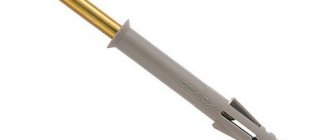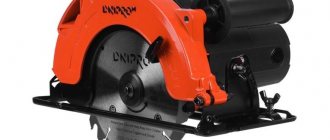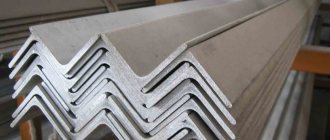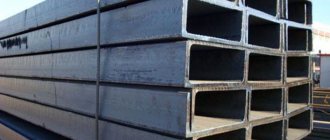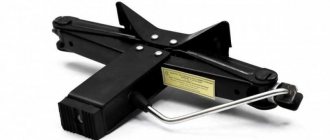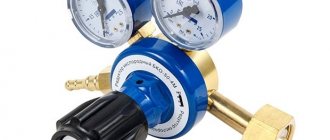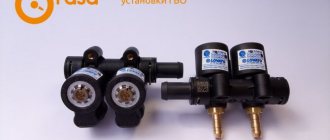The worm gearbox is often considered an important part not only in the automotive industry. The worm gear is considered an important part wherever it is necessary to increase torque and reduce the number of rotations of the drive. Such a mechanism is used to drive gates, lifts, machines for processing metals, wood and other similar devices. Almost every person has seen a worm gearbox, sometimes without even knowing it.
The fact is that such a drive mechanism is often hidden in a housing so that the mechanism does not become clogged with dust and other debris, and this significantly extends the service life of the mechanism. The worm gearbox is so often used because the efficiency of this mechanism is very high. Such a mechanism can be either small or large.
Due to its small size, worm gears are most often used in automobile production. Each converter has its own gear ratio. This number is often indicated on the packaging of the device, or on the body itself.
Advantages and disadvantages
Worm gears, due to their design features, have both advantages and disadvantages.
Among the advantages, it is worth noting the smooth running, self-braking effect, low noise level, large gear ratio using only two parts.
Among the disadvantages, attention should be paid to the relatively low efficiency, increased wear, jamming, and high heat generation due to friction forces. Low efficiency determines the use of such mechanisms when transmitting relatively small powers up to 100 kW. To prevent rapid wear and jamming, it is necessary to comply with the requirements for assembly accuracy and adjust the mechanisms. High heat generation requires special installations to remove excess heat.
The difference between gearboxes mainly comes down to the differences in the worms and gears from which a given worm gearbox is assembled.
Worms are divided into types according to the following characteristics:
- by number of thread starts: single-start, multi-start
- in the direction of thread cutting: right, left
- according to the shape of the screw on which the thread is cut: cylindrical, globoid
- according to the shape of the thread profile: with a convolute profile, with an Archimedean profile, with an involute profile
- Gears are divided into types according to the following characteristics:
- by wheel type: wheel itself, gear sector, degenerate sector
- according to the profile of the teeth: straight, concave, roller (a rotating roller is used instead of teeth)
Worm gearboxes with a built-in motor are called worm gearmotors. In gearboxes, the motor shaft is most often located at right angles to the movable one. The layout of the worm gearbox is selected based on the specific requirements for the devices. The engine can be located either on top of the driven wheel, or below and on the side. When positioned sideways, the engine is installed vertically. Due to the vertical location, the process of lubrication of the shaft bearings, as well as cleaning of external elements, is complicated.
Various technologies are used to increase the gear ratio, but the most effective is the use of a larger number of stages.
To soften friction forces and increase resistance to seizing, special viscous lubricants or oils are used. At low rotation speeds, lubrication is carried out using special oil baths or using special devices that spray lubricant into areas of high friction. For worm gearboxes, the rotation speed of which is high, the use of baths is impractical, and forced lubrication with cooled lubricants is used.
The main advantages of a worm gearbox over gears are that the initial contact of the links occurs not at a point, but along a line. Also, the input and output shafts can cross at different angles, but most often this angle is 90 degrees. Also, a worm gear takes up much less space than a toothed gear with the same large gear ratio.
In addition to the worm gearbox, the worm gear is also used in regulation and control systems for various devices. Thanks to self-braking, precise position fixation is ensured, and a large gear ratio (up to 1000) allows you to most accurately adjust the position, or use low-power motors. Also, worm gears and worm gearboxes are excellent for installation as a transmission mechanism in lifting and winching mechanisms due to their design features.
Some technical characteristics of industrially produced and widely used worm gearboxes.
The most common are single-stage geared motors.
| Type | Gear ratio | Output shaft rotation speed rpm | Rated output torque Nm | |
| gearbox | gear motor | |||
| Ch-20 | MCH-20 | 5 — 50 | 28 — 300 | 4 |
| Ch-25 | MCH-25 | 6 | ||
| Ch-31.5 | MCh-31.5 | 8 | ||
| 2H-40 | MCH-40 | 5 — 80 | 9,37 — 300 | 28 — 37 |
| Ch-50 | MCH-50 | 50 — 70 | ||
| 1Ch-63, 2Ch-63 | MCH-63 | 5 — 80 | 7,5 — 300 | 95 — 135 |
| 1Ch-80, 2Ch-80, Ch-80 | MCH-80 | 150 — 280 | ||
| Ch-100 | MCH-100 | 315 — 570 | ||
| Ch-125 | MCH-125 | 615 — 1000 | ||
| Ch-160 | MCH-160 | 1100 — 1900 | ||
| Ch-200 | MCH-200 | 1600 — 3100 | ||
| Ch-250 | MCH-250 | 2700 — 5700 | ||
| Ch-320 | MCH-320 | 4400 — 10000 | ||
| Ch-400 | MCH-400 | 6500 — 19000 | ||
| Ch-500 | MCH-500 | 8200 — 33000 | ||
| RCHN-180 | MRCHN-180 | 12,5 — 50 | 20 — 90 | 1300 — 1800 |
| RChP-300 | MRChP-300 | 16, 25, 50 | 20 — 40 | 4200 |
Worm gear cutting technology
The worm gear model is created during the product design process. Based on the diagram, you can determine the cutting method:
- end;
- cutter feed from below.
Face cutting of worm wheels requires a tool completely similar to a worm. The device allows processing with high precision. It is difficult to insert the cutter from below. It is necessary that its position relative to the shaft exactly matches the worm.
On the crown, teeth are cut using cutters having the same outer diameter as the worm. The tool follows the shape of the leading element, but the line is not continuous, instead there are rows of cutters.
The configuration of the cutting plate must exactly replicate the thread, and it must be wider by the amount of the gap. As a result, the shape of the worm wheel is precisely similar to the shape of the thread. Its depressions completely coincide with the protrusions of the threads.
The cutter is positioned in the axial plane of the worm, touching the surface of the product. The rotation of the ring gear occurs around its own shaft or vertical mandrel. This ensures tangential feed of the outer surface along the axis of the cutter.
The cutting of worm gears is carried out in synchronous movement of the part and the tool, turning around their own axes. The rotation speed is set by the gear ratio. Each revolution of the crown moves it closer to the rotating cutter.
The cutting tool is fed both from above and from below. In practice, preference is given to radial cutting. The method is the most convenient and highly accurate.
Repair cutting is performed when it is necessary to make one part for replacement in the gearbox. It is not always possible to find a cutter of the required diameter in workshops. When using a larger tool, the fit will become worse and the contact patch will decrease. Cutting with a smaller diameter cutter will increase the load on the upper part of the thread. In both cases, a wheel repaired in this way will have high wear and friction. The efficiency will also drop. Therefore, cutting must be done with cutters with exactly the same diameter.
Types of worm gearboxes
Worm gearboxes can vary significantly depending on the application of the mechanism.
The main differences that can be used in the design:
- Different number of visits;
- Part material;
- Thread direction;
- Thread profile;
- Types of screw used.
These differences may be present in various combinations. The engineer decides what types of worm gearboxes to use at the design and development stage of devices and mechanisms that use these types of torque transmission.
Worm Gear Design
It is almost impossible to make a worm gearbox with your own hands. The calculation of the worm gear must be carried out by a qualified specialist. When the drawing is made, all parts according to it are made only from materials of proper quality, otherwise the gear mechanism may fail after a short period of work. The assembly of the worm gearbox should also be carried out by an experienced craftsman. Failure to comply with this rule can significantly reduce the service life of the part, because in addition to the correct installation of the shafts, careful adjustment of the worm mechanism will be required.
If it is necessary to use a worm gear in order to install a homemade torque transmission mechanism, then in this case it is better to use ready-made used products from equipment that uses a similar type of torque transmission. In the case when independent development of new devices that will be patented is carried out, the design of a worm gearbox should be ordered from a design bureau engaged in such developments.
Principle of operation
The basis of the entire transmission mechanism is a worm-shaped drive screw, in honor of which these types of gearboxes got their name. The worm screw interacts with a gear whose axial shaft is located at a right angle. As a result of this coupling, a high rotation speed of the input shaft with low torque is transformed into rotation of the output shaft with a low frequency but much greater force. The layout of the worm gearbox can be different. If the worm gear shaft rotates at a speed below 5 m/s, then the worm is located at the bottom, if the speed is higher, then a gearbox with an upper worm is installed.
Most mechanisms of this type are used with a single gear stage, but sometimes a two-stage worm gearbox can be used to control the ratio.
If the shaft rotation speed is more than 10 m/s, the bearings and hypoid gears must be lubricated under pressure. If the engine is low-speed, then natural oil circulation when the gear rotates is sufficient.
Oil for worm gearboxes must be of high viscosity, otherwise the wear process of the most loaded parts of the gearbox will be significantly accelerated.
Disadvantages of worm gearboxes and drives built on them
1. The efficiency of a worm gearbox is lower than the efficiency of a cylindrical gearbox. Moreover, the efficiency decreases with increasing gear ratio. This entails energy losses - a factor that in the modern world cannot be discounted under any circumstances. For example, the efficiency of a Russian-made Ch-80 worm gearbox with a 1:80 gear ratio is 58%. The remaining 42% are losses due to irreversible energy dissipation. This disadvantage is due to the increased sliding friction of the worm turns on the teeth of the worm wheel compared to other types of gears. In this sense, a worm gear is similar to a “sliding screw-nut” gear, which is also not characterized by high efficiency. During the running-in period under load for 200...250 hours, the efficiency can be 90% of the nominal.
2. Heating. This is a consequence of the previous shortcoming. That kinetic energy that was not transferred by the worm gear is converted into heat. It’s not for nothing that the housings of worm gearboxes have ribs that make them look like central heating radiators. Some large worm gearboxes are supplied with fan impellers on the free end of the high-speed shaft. In other cases, it is necessary to organize forced oil circulation in the gearbox housing. The above applies to gearboxes with high transmitted power (over 4...5 kW). In lower power applications, additional heat dissipation measures are generally not required. However, heating of the worm gear housing during its operation always occurs.
3. Self-braking (for more details, see paragraph 5 “advantages”). Its appearance is sometimes harmful - in cases where the output shaft needs to be turned without turning on the worm gear drive.
4. Limitations on transmitted power. Technical literature does not recommend using a worm gear with a transmitted power of more than 60 kW (source - Handbook of mechanical engineering designer V.I. Anuryev, vol. 2, p. 606, 2001 edition). Worm gearboxes for higher power, however, do exist. These are mainly globoid worm gearboxes used in special cases (for example, elevator and hoist drives). And yet, when choosing a gearbox for such power, it is recommended to give preference to cylindrical types of gearboxes. As far as I know, leading foreign manufacturers of worm gearboxes mostly produce worm gearboxes for power transmission up to 15 kW.
5. Output shaft play. Such play exists in any type of gearbox, however, in worm gearboxes its value is usually greater and increases with wear.
6. The service life of worm gearboxes is generally considered lower than that of cylindrical gearboxes. This is a very conditional statement, but due to the presence of increased sliding friction in the mesh compared to other types of gearboxes, wear does occur. Russian manufacturers of gearboxes provide the following data on the operating life parameters of gearboxes with different types of gears:
- Worm drives - at least 10,000 hours;
- Helical gearboxes - at least 25,000 hours (data, St. Petersburg).
7. Operation of the worm gearbox under conditions of uneven loads on the output shaft, as well as with frequent starts and stops, is not recommended.
Steering
It is used in cars not only in axles, but also in the steering system. In fact, the liquid steering gear is the oldest system that has gone through many changes, but its technical principle has remained the same.
The steering gear in a car is used to make it easier to turn the steering wheel, even in a car without power steering.
The steering gearbox has a number of advantages, the main one being the large energy transfer ratio. We can say that the advantages include the low noise of the gearbox and smooth operation. The steering gear also has disadvantages, the main of which is rapid wear of the chain mechanism and excessive heat generation. The drive for the steering energy converter is the steering wheel.
Adjusting the device
Adjustment of the steering mechanism is used to compensate for gaps in the worm-roller and pinion-rack mechanisms. During operation, play may appear in these mechanisms, which can lead to rapid wear of the elements. The steering mechanism must be adjusted only in accordance with the manufacturer’s recommendations and at specialized service stations. Excessive “clamping” of the mechanism can lead to it jamming when turning the steering wheel to extreme positions, which can lead to loss of control of the car with corresponding consequences.
Gearbox lubrication system
Each such vehicle unit has a lubrication system. Oil is supplied under pressure to the bearings and chain mechanism. In addition to its direct responsibility, the lubrication system cools and removes excess wear elements from the gearbox housing, which can render the chain gears unusable. These elements leave the system with the oil and are retained by the filter.
To prevent oil from leaking out of the gearbox housing, special seals are required. Special oil seals in the car are not only in this system. These seals are found wherever a seal is required. In order for the seals to create a tight seal, the seals must be installed correctly. Replacing oil seals is the same complex procedure as repairing a gearbox. The first reason that oil seals need to be replaced is a trace of oil on the housing.
Gearbox repair
Simple worm gear repairs can be done on your own. If the motor and drive are combined in one housing, then the mechanism should be carefully disassembled.
The part of the common crankcase in which the drive is located must also be disassembled. If the worm drive design is made for a high-speed motor, then before proceeding with disassembling the gearbox, it is necessary to drain the transmission oil from the housing.
This type of gearbox uses high-quality bearings, so most often the need for repair occurs if the gear and worm are worn beyond the limit values. The working pair must always be simultaneously replaced with a complete repair kit, which, before entering the distribution network, must be correctly selected and tested on a special stand.
If the wear of the worm pair is insignificant, then the gap can be eliminated using special spacer washers on the driven shaft.
The design of the worm gear also allows for adjustment of the engagement of the gear with the worm without disassembling the housing. For this purpose, a bolt is used that is built into the housing. If you have a drawing of the device, you can easily determine where the gear is adjusted. If there is no drawing, then an indirect sign of the adjusting bolt will be the presence of a lock nut on it, which is used to fix the adjusted gap between the worm and the gear. It is extremely rare that gearbox bearings require replacement. Typically, the drive is equipped with high-quality ball bearings that do not require replacement or repair throughout the entire service life of the part. Bearings can only be damaged if the drive has been used for a long time without lubrication or with the use of low-quality lubricants.
Basic data
The worm gear is the main transmission component. It is a conical, cylindrical disk with teeth located on its upper plane. With the help of the latter, during rotation, the gear engages with the worm, which allows the rotational moment to be transferred from the shaft with the gear to another spindle.
The teeth of one element push counterparts on the other, which drive their axis. The shaft on which the worm is located begins to rotate and transmit movement to other structural elements. The device or installation begins to function and perform its tasks.
